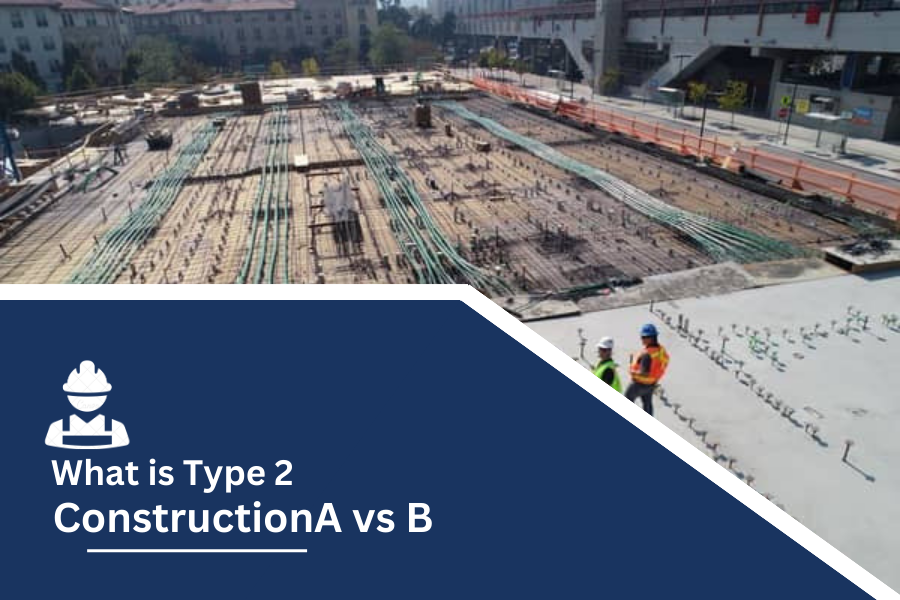What is Type 2 Construction A vs B?
Table of Contents
1. Understanding Type 2 Construction
Type 2 construction refers to a specific classification in the building industry that encompasses two distinct categories: Type 2A and Type 2B. To comprehend the nuances between these classifications, it’s crucial to delve into the characteristics that define each type.
2. Type 2 Construction Classifications
1. Type 2A
Type 2A construction is known for its use of non-combustible materials, providing a higher level of fire resistance. This section will explore the key components and building methods associated with Type 2A construction.
2. Type 2B
On the other hand, Type 2B construction utilizes combustible materials, requiring a different approach to ensure fire safety. We will examine the materials and construction methods specific to Type 2B in this section.
3. Structural Components of Type 2A Construction
1. Materials Used
Type 2A construction relies on materials such as concrete and steel, ensuring a robust and fire-resistant structure. This section will detail the significance of these materials in Type 2A buildings.
2. Building Methods
The construction methods employed in Type 2A projects contribute to their strength and durability. Understanding these methods is vital for anyone involved in the construction industry.
4. Structural Components of Type 2B Construction
1. Materials Used
Unlike Type 2A, Type 2B incorporates combustible materials like wood. We will explore the implications of this choice and how it influences the structural components of Type 2B buildings.
2. Building Methods
The building methods used in Type 2B construction differ due to the nature of combustible materials. This section will outline the unique construction techniques associated with Type 2B.
5. Fire Resistance in Type 2A
1. Features
Type 2A construction boasts inherent fire-resistant features that set it apart in terms of safety. Understanding these features is crucial for assessing the suitability of Type 2A in various scenarios.
2. Advantages
The advantages of the fire-resistant characteristics of Type 2A construction extend beyond safety. This section will explore the additional benefits that contribute to the popularity of Type 2A.
6. Fire Resistance in Type 2B
1. Features
While Type 2B construction may not inherently possess the same level of fire resistance as Type 2A, specific features contribute to its safety measures. We will delve into these features in this section.
2. Advantages
Understanding the advantages of fire resistance in Type 2B construction is essential for making informed decisions in construction planning. This section will highlight the strengths of Type 2B in this regard.
7. Comparing Fire Resistance of Type 2A and 2B
To make an informed choice between Type 2A and Type 2B construction, a comparative analysis of their fire resistance is essential. This section will provide insights into the strengths and limitations of both types.
8. Applications of Type 2A Construction
Understanding where Type 2A construction is most suitable is crucial for architects, builders, and investors. This section will explore the diverse applications of Type 2A buildings.
9. Applications of Type 2B Construction
Similarly, Type 2B construction finds its niche in specific applications. This section will highlight where Type 2B is most commonly employed and its advantages in these scenarios.
10. Pros and Cons of Type 2A
1. Strengths
Type 2A construction brings numerous strengths to the table, making it a preferred choice in certain situations. This section will outline the positive aspects of Type 2A.
2. Weaknesses
No construction type is without its drawbacks. Understanding the weaknesses of Type 2A is crucial for making informed decisions in building projects. This section will explore these limitations.
11. Pros and Cons of Type 2B
1. Strengths
Type 2B construction, with its unique characteristics, offers distinct advantages. This section will highlight the strengths that make Type 2B a viable choice in specific scenarios.
2. Weaknesses
However, like any construction type, Type 2B has its limitations. This section will delve into the weaknesses of Type 2B, providing a comprehensive understanding for decision-makers.
12. Considerations for Choosing Between Type 2A and 2B
Choosing between Type 2A and 2B construction involves considering various factors. This section will provide guidance on the key considerations that should influence this decision.
13. Regulatory Compliance and Type 2 Construction
Adhering to regulations is paramount in the construction industry. This section will outline the regulatory aspects associated with Type 2 construction and how compliance is achieved.
14. Future Trends in Type 2 Construction
As technology and construction methodologies evolve, so do trends in building construction. This section will explore emerging trends in Type 2 construction, offering a glimpse into the future of these building types.
15. Conclusion
In conclusion, understanding the nuances of Type 2A and Type 2B construction is crucial for making informed decisions in the construction industry. Each type has its unique features, strengths, and weaknesses, catering to specific needs and applications. By weighing these factors carefully, builders and architects can choose the most suitable type for their projects.
16. FAQs
Q1. Is Type 2A construction always more expensive than Type 2B?
The cost difference between Type 2A and 2B construction depends on various factors, including materials and building methods.
Q2. Can Type 2B construction be as safe as Type 2A?
With proper planning and safety measures, Type 2B construction can achieve a high level of safety comparable to Type 2A.
Q3. Are there specific industries that prefer Type 2A construction?
Type 2A construction is often favored in industries where fire resistance is a critical factor, such as manufacturing and storage.
Q4. What regulatory considerations should be kept in mind for Type 2 construction?
Compliance with local building codes and fire safety




